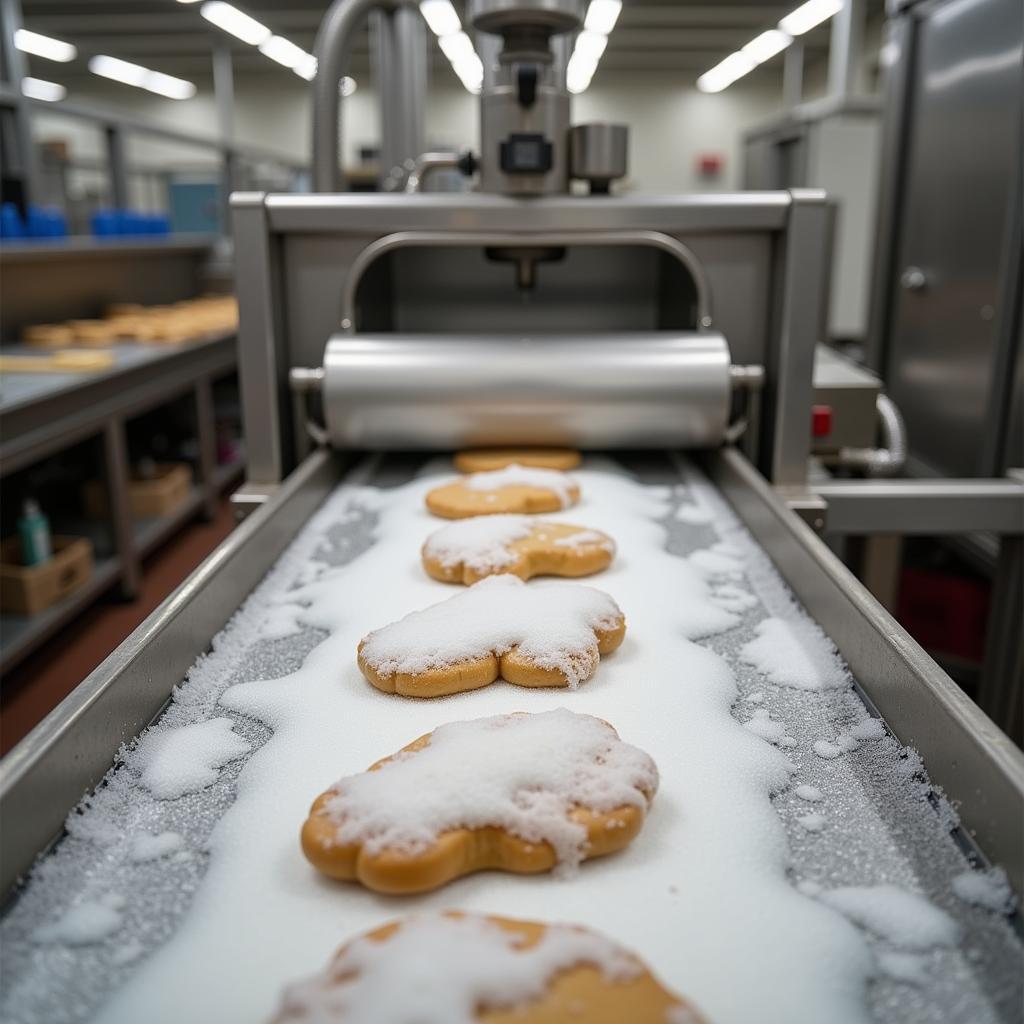Defoamer Food, also known as an anti-foaming agent, plays a crucial role in various food processing applications. These essential additives control and prevent foam formation, ensuring product quality and efficient production. This article explores the intricacies of defoamer food, delving into its uses, benefits, and regulatory aspects.
Understanding Defoamer Food: What is it?
Defoamers are chemical additives that reduce and hinder the formation of foam in food processing. They work by destabilizing the foam’s structure, causing the bubbles to collapse and preventing new ones from forming. This is essential for maintaining product quality, optimizing processing efficiency, and preventing equipment damage caused by excessive foaming.
food defoamer are used in a wide range of food and beverage applications. From the production of jams and jellies to the processing of sauces and soups, these agents play a vital role in maintaining product quality and consistency. They ensure that the final product meets the desired texture and appearance, free from unwanted foam.
Why is Defoamer Food Important?
Foam can be a nuisance in food processing, causing issues ranging from product overflow and equipment malfunction to compromised product quality. Defoamers mitigate these problems, ensuring smooth and efficient production.
- Improved Product Quality: Defoamers prevent foam from affecting the final product’s texture, appearance, and overall quality. Imagine a jar of jam filled with foam—not very appealing, right? Defoamers help avoid this, ensuring a smooth, visually appealing product.
- Enhanced Processing Efficiency: By controlling foam, defoamers help streamline production processes, minimizing downtime and maximizing output. Less foam means fewer interruptions and a more efficient production line.
- Equipment Protection: Excessive foaming can damage processing equipment. Defoamers protect these valuable assets by preventing foam buildup, extending their lifespan and reducing maintenance costs.
 Food processing with defoamer, highlighting its role in maintaining a smooth and efficient process.
Food processing with defoamer, highlighting its role in maintaining a smooth and efficient process.
What are the Different Types of Defoamer Food?
Several types of defoamer food are available, each suited to specific applications and food matrices. Understanding these differences is crucial for selecting the right defoamer for your needs.
- Silicone-based defoamers: These are highly effective and versatile, used in a wide range of food applications.
- Oil-based defoamers: These are particularly effective in oil-containing food products.
- Powdered defoamers: Easy to handle and store, powdered defoamers offer convenience in certain applications.
Choosing the right defoamer depends on factors such as the specific food product, processing conditions, and desired outcome. Consulting with food additive manufacturers is crucial for selecting the most suitable and effective defoamer for your particular application. They can provide expert guidance based on your specific needs.
Regulatory Aspects of Defoamer Food
Food defoamers are subject to strict regulations to ensure their safety for human consumption. Manufacturers must adhere to these guidelines to maintain compliance and protect consumers.
“Ensuring the safety and quality of food defoamers is paramount. Rigorous testing and adherence to regulatory standards are crucial for protecting consumers and maintaining public trust,” says Dr. Anna Miller, a leading food scientist specializing in food additives.
Defoamer Food and Food Safety
Concerns about the safety of food additives are common. However, regulated defoamer food, when used correctly, poses no significant health risks.
“When used within the prescribed limits, approved food defoamers are safe for human consumption. The key is to work with reputable manufacturers and follow their guidelines carefully,” adds Dr. Miller.
 Defoamer food safety testing in a laboratory setting, emphasizing the importance of rigorous quality control.
Defoamer food safety testing in a laboratory setting, emphasizing the importance of rigorous quality control.
Conclusion: The Importance of Defoamer Food in the Food Industry
Defoamer food plays a vital role in ensuring smooth, efficient, and safe food processing. By controlling foam, these essential additives contribute to improved product quality, enhanced production efficiency, and equipment protection. Understanding the different types of defoamers and adhering to regulatory guidelines are crucial for maximizing their benefits.
FAQs about Defoamer Food
- What is the primary function of defoamer food? To control and prevent foam formation during food processing.
- Are food defoamers safe to consume? Yes, when used within regulated limits.
- What are the different types of defoamers available? Silicone-based, oil-based, and powdered.
- How do I choose the right defoamer for my application? Consult with a food additive manufacturer.
- What are the regulatory aspects surrounding defoamer food? Strict regulations ensure their safety for human consumption.
- How do defoamers improve processing efficiency? By minimizing foam-related disruptions and downtime.
- What impact does foam have on food product quality? Foam can negatively affect texture and appearance.
Please contact us at Phone Number: 02437655121, Email: minacones@gmail.com, or visit our address: 3PGH+8R9, ĐT70A, thôn Trung, Bắc Từ Liêm, Hà Nội, Việt Nam. We have a 24/7 customer support team.